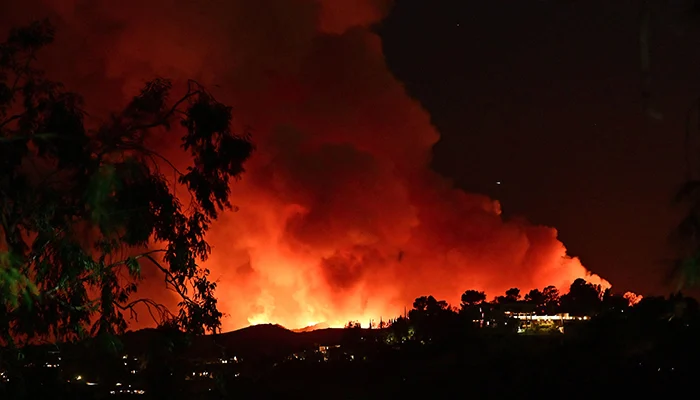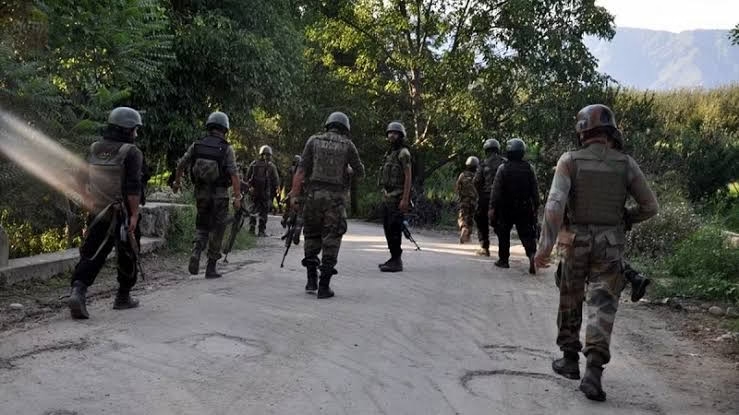Heartbreaking facts: Wildfires Devastate Los Angeles, Causing Billions in Losses and Destroying Thousands of Homes
The largest of the devastating wildfires that have ravaged parts of Los Angeles this week shifted direction on Saturday, triggering further evacuation orders and posing a new challenge to exhausted firefighters.
Since Tuesday, six wildfires have torn through Los Angeles County neighbourhoods, killing at least 11 people and causing damage or destruction to 10,000 structures. The death toll is expected to rise once firefighters are able to conduct house-to-house searches.
The intense Santa Ana winds that had been fuelling the fires subsided on Friday evening. However, the Palisades Fire, located on the city’s western edge, changed course, prompting additional evacuation orders as it approached the Brentwood neighbourhood and the San Fernando Valley foothills, as reported by the Los Angeles Times.
“The Palisades fire has experienced a significant flare-up on its eastern portion and continues to move northeast,” said LA Fire Department Captain Erik Scott during a report on KTLA, according to the LA Times.
The Palisades Fire, which has become the most destructive in Los Angeles’ history, has destroyed entire neighbourhoods, leaving behind only the smouldering remains of homes and possessions.
Prior to the flare-up, firefighters had reported some progress in containing both the Palisades and Eaton Fires in the foothills east of the city, after they had been raging uncontrollably for days. As of Friday night, the Palisades Fire was 8% contained, and the Eaton Fire was 3%, according to the state agency Cal Fire.
Together, the two fires had consumed 35,000 acres (14,100 hectares), or 54 square miles — 2.5 times the size of Manhattan.
Around 153,000 people were still under evacuation orders, and another 166,800 people faced evacuation warnings, with a curfew imposed on all evacuation zones, said Los Angeles County Sheriff Robert Luna.
Firefighting teams from seven neighbouring states, the federal government, and Canada have sent aid to California, boosting aerial efforts to drop water and fire retardant, as well as ground crews attacking fire lines with hand tools and hoses.
The National Weather Service reported that conditions in Los Angeles would improve over the weekend, with sustained winds dropping to about 20 mph (32 kph), gusting between 35 mph and 50 mph.
“It’s not as gusty, so that should help firefighters,” said NWS meteorologist Allison Santorelli, although she noted that conditions remained critical due to low humidity and dry vegetation.
Cal Fire warned that strong winds could return on Tuesday, and the agency stated that “there will continue to be a high likelihood of critical fire weather conditions through next week.”
A public health emergency has been declared due to the toxic smoke blanketing the region.
Homes Reduced to Ash
Residents of Pacific Palisades returning to their devastated neighbourhoods on Friday were met with the haunting sight of brick chimneys standing over charred remains and burnt-out vehicles as acrid smoke lingered in the air.
Kelly Foster, 44, combed through the rubble where her house once stood. “This was a house that was loved,” she said. Her 16-year-old daughter Ada attempted to return to the site but found herself overwhelmed, saying, “I just became sick. I just couldn’t even… yeah, it’s hard.”
In Rick McGeagh’s Palisades neighbourhood, only six of the 60 homes remained standing. The sole survivor at his ranch house was a statue of the Virgin Mary, with “everything else [being] ash and rubble,” said McGeagh, 61, a commercial real estate broker who, along with his wife, had raised three children in their home.
On Friday morning, hundreds gathered at a parking lot near the Rose Bowl stadium in Pasadena to collect donated clothing, diapers, and bottled water.
Denise Doss, 63, was anxious to return to her destroyed home in Altadena to see if anything could be salvaged, but officials prevented her from returning due to safety concerns. “At least to say goodbye until we can rebuild. I will let God lead me,” Doss said.
Billions in Losses
Many Altadena residents expressed concern that government resources might favour wealthier areas and that insurance companies could undervalue claims for those unable to challenge denials.
In addition to those who lost their homes, tens of thousands were left without power, and millions of people faced poor air quality as the fires released metals, plastics, and other synthetic materials into the atmosphere.
Private forecaster AccuWeather estimated that the total damage and economic loss could range from $135 billion to $150 billion, signalling a long and costly recovery process, with rising homeowners’ insurance premiums.
California Insurance Commissioner Ricardo Lara called for insurers to suspend pending non-renewals and cancellations of policies that homeowners had received before the fires began and to extend the grace period for payments.
President Joe Biden has declared the fires a major disaster, and the US government will reimburse 100% of recovery costs for the next six months.






